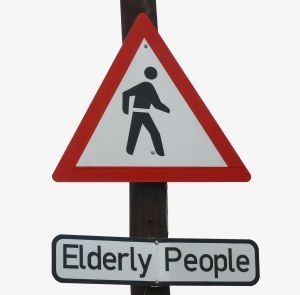
Life EternalTheresa Roth To be immortal is to live forever, but such a thing is obviously considered unattainable by most. In today’s world immortality may be a written piece of work that survives the ages or a great accomplishment that is remembered throughout history. A growing number of people believe that with advancing medical and anti-aging research, steps towards immortality, in a biological sense, may be made. Some scientists believe that soon we will be able to increase our lifespan by hundreds of years. This may not be true immortality, but it is much closer to it than we are now. Cell Life and Death
 When we are born, we have trillions of cells in our bodies, each cell contributing in a small way to the overall function of the body, some of them more necessary than others. There are some types of cells, such as neurons, of which we only have a fixed amount throughout our lives, these cells will never reproduce or go through mitosis. If anything, the number of neurons will decrease as we age. Most cells, however, will go through mitosis a number of times throughout their lifespan in order to replace dying cells. When cells go through mitosis, each organ in the cell and the cell’s DNA must be replicated. DNA replication must be precise, as the DNA is essentially the instruction manual for the cells. DNA is composed of two strands of long sequences of nucleotides, which bond together to create a double helix. The process of DNA replication begins when the enzyme helicase starts to unwind the two strands of DNA, each strand is a mirror of the other and so each will become a template for the new strand. At the end of the process the two new sets of DNA will each have one new strand and one original strand. Once the helicase begins the unwinding process, DNA polymerase, another enzyme, comes in and attaches new DNA nucleotides in the correct order to the template strand, thus making two identical sets of DNA. In the early 1930’s Hermann J. Muller and Barbara McClintock discovered that at the end of DNA there are long segments of the sequence TTAGGG, named telomeres. It was quickly found that without the telomere, “end replication problems” arise, which always lead to cell death. When DNA replicates a small part of the 5’ strand will not be replicated, shortening it slightly. The telomere is the part of the DNA that is shortened protecting the part of the DNA that comes before it. In the 1960’s, Hayflick found that human diploid cells will only replicate a limited number of times in vitro before reaching cell senescence, or the aging and death of the cell. The maximum number of times a cell can replicate is now known as the “Hayflick Limit”, roughly fifty to seventy replications. Telomerase
In 1989 an enzyme named telomerase was found in human cancer lines by Greider, She also noted that telomerase was almost always absent in somatic cells (specifically cells which make up the body, excluding germs, bacteria, and gametes). In the 1990’s Shay and Harley “detected telomerase in 90 of 101 human tumor cell samples (from 12 different tumor types), but found no activity in 50 normal somatic cell samples (from 4 different tissue types). Since then, more than 2600 human tumor samples have been examined and telomerase activity detected in about 90% of all tumor cells,” (Greider CW, Blackburn EH). High amounts of telomerase are also expressed in stem cells. Cancer, tumor, and stem cells are well documented for their ability to replicate infinitely without consequence (other than the occasional mutation). The telomerase rebuilds the telomeres of these cells, keeping them at a constant length or building the telomeres back up once they reach a critically short point. It is likely that telomerase is a main component of cancer cell immortality, but manipulating it to kill off cancer cells Is a dangerous cure, as small amounts of telomerase are expressed in organs such as the skin and is also necessary for stem cell regeneration. So far the studies on telomerase have been promising. A combination of researchers from Iowa and British Columbia (Karlseder) found that expressing the telomerase RNA component and the catalytic telomerase component in cells affected by dyskeratosis congenital, an inherited bone marrow syndrome caused by critically short telomeres, elongated the telomeres to at least a normal length and increased the life span of the cell. This effect was most prominent when both types of telomerase were expressed. The study proved that cells can be “rescued” (Karlseder) from defects or short telomeres. Another study done in late 2006 by Rita B. Effros at the UCLA AIDS Institute suggests that telomerase may be able to stop senescence in T cells, which are a vital part of the immune system, to provide treatment for HIV and aging. As of yet it has only been proven that telomerase will help the T cells avoid senescence in vitro and on virus specific T cells. It is hypothesized that telomerase will be crucial in helping those with HIV/AIDS as well as those who are simply aging to live out his or her years with enhanced quality of life. Effect of the Environment on Lifespan
The effect that environment and lifestyle can have on lifespan is enormous. It has been well documented that lab mice and rats have extended life spans when their calorie intake is restricted. In human society people who have obesity issues are not expected to live as long as those who do not. Obesity can lead to other health issues such as diabetes. Increased medical care and access to medical care are known factors of life length. There are many other factors that are not often considered. Georgia is well known for the longevity of its people. The majority of the people with above average life span live in western Georgia, which has a moist subtropical climate. The mountain region is thought to be especially beneficial due to the sunlight which is rich in ultraviolet rays and aeroionization, making elevation an unexpected contributor to long life. Another positive factor on longevity is work. Physical exertion helps keep the body strong well into old age, increasing the life span. Medical examinations of about forty thousand people of the ages eighty and older showed that sixty percent of these people were still working at the time. (Pitskhelauri 43, 93, 135) It is the combination of these factors that most contributes to a long and healthy life, though some are not as important as others. Genetic Longevity
The length of one’s lifespan is not totally dependent on one’s lifestyle choices. Longevity is likely encoded in our genetic make-up. It has already been found that telomere length is dependent on paternal genes. If a father has a longer lifespan and longer telomeres the offspring will also have longer telomeres. Maternal genes, however, had little to no significance in the offspring’s telomeres. Small societies which have a limited gene pool sometimes express longevity passed down through the generations. In Georgia investigations into the life expectations of past generations showed a tendency for long living parents to produce long living offspring. Another group of people, the Ashkenazi Jews, are well known for being incredibly long lived. A study done by the Albert Einstein College of Medicine (Atzmon), investigated why many of these people are able to live longer before the onset of age related diseases, which tend to lead to death. The study looked at Ashkenazi whose mean age was 98.2, who were also living independently, their direct offspring, and control groups of Ashkenazi who were not long lived and participants from the Framingham Offspring Study. It was found that the Ashkenazi with greater longevity have a much lower incidence of hypertension, a marker of increased blood pressure and vascular aging. An allele that is thought to be related to this, APOC3 −641C, was also located. Homozygosity for this allele was much higher in the centenarians and their offspring than the control groups, which is also associated with more favorable lipoprotein size, cardiovascular health, and insulin sensitivity. Thus, it is possible to stretch out your life span simply by living optimally, but having genes which code for good health late into life doesn’t hurt either. Ethics and Immortality If given the option of living double one’s expected life span how many people would take the offer? Would most of society recoil from the thought of messing with our predetermined life spans or jump at the opportunity? There has been much speculation about this, but surprisingly the public has not yet been asked their opinion. Many bioethicists, such as Leigh Turner, (Turner “Is Repugnance Wise” 2004) believe that the public will be quite reluctant to accept new anti-aging technology, though they have no factual basis for their assumptions. Look at the amount of products to reduce the appearance of aging on the market already, not to mention various procedures and surgeries that are preformed every day in order to mask true age. That the market for anti-aging products is already fairly pronounced in our society leads many supporters of aging research to believe that their findings will be well received and encouraged. The interest in this market may be more due to the desire to appear youthful rather than to increase lifespan, but many anti-aging researchers want to improve quality of life as well as delay the inevitable that is death. Increasing life span is a lofty goal, but if one must live miserably with all the health issues that old age incurs, the costs of living longer may greatly outweigh the benefits. Interestingly enough, one of the few polls conducted showed that those who are already living with infirmities would be more willing to increase their life span even if it meant living longer with the same problems (Lucke). No one can yet tell if increasing our lifetime is for the better or worse. Many opponents of life extension fear the effect it will have on our social and economic structures, as well as family life. Issues with Social Security and Medicare have already risen due to the number of retired and aging rising above the numbers of those who are still working and contributing to these funds through taxes. If we increase the life span of those who are already unfit for work we simply aggravate the problem. Some critics worry that families will become less important, raising children will take a smaller portion of one’s life and thus family dynamics will have to change. Other critics such as Leon Kass, the Chairman of President Bush’s board of bioethics and Daniel Callahan believe that looking for a way to make man immortal is simply bio researchers and doctors trying to play God and “vanquish” all disease and human failings. Many cite religion as a reason to not use life extending technologies as God made us to live a certain number of years and then to die. This view is not held by all, but there are certainly a few who would rather we did not try to make ourselves immortal because it would be destroying God’s design. There are even those, such as Francis Fukuyama, who fear that such technology will lead us to a “post human” future, which in his view is a terrible thing. Overall, the critics of life extension have a number of reasons for believing that we are doing the wrong thing, from simple religious arguments, to the belief that we could destroy the economy and the proper functioning of society or even end humanity (Lucke). Pro Life Extension
The desire to increase human life is just as widespread, if not more so, than the desire to leave it unchanged. After all, to many the idea of living an extra ten to twenty to even fifty years, especially in good health, seems wonderful. Preventing aging is the latest way researchers are trying to extend life. By keeping people in better health as they age the likelihood of living longer increases. For many of the life extensionists it is a no brainer as to why one would want to increase their years on the planet, or at least make them more enjoyable. Societal change is inevitable. Change could happen because we manage to increase the length of lives, effectively slow the degeneration that comes with aging, or because of any other new technology or economical growth. Some of these enthusiasts are already convinced that we will have technology to help him or her live forever within the next twenty to thirty years, but most see it as a way to live out the rest of their years in comfort and decreased worry about the onset of disease or loss of bodily functions. Aubrey de Grey is a notorious British biogerontologist who has made a few recent media appearances such as on the Colbert Report, and CBS’s 60 Minutes. Biogerontology is the study of aging, and how to increase the time spent healthy as compared to that spent in deteriorating health. Many biogerontologists do not claim their goal to be life extension but to simply extend the time we spend healthy. Others, like de Grey, are becoming more outspoken about how this will affect lifespan. De Grey is constantly being attacked for his claim that we are within reach of delaying or stopping the effects of aging, not to mention that he honestly believes that people alive now will have the ability to live past a thousand years. As de Grey explains his hypothesis, if we can keep coming up with technologies that allow people to live an extra thirty to fifty years, and then in another twenty or thirty years extend it again, it is possible to live long past the expected lifespan of today. By continuing to maintain our bodies and stopping them from breaking down we can continue to live as long as we desire. Many of his opponents say that de Grey’s estimates of potential lifespan are ridiculous and unreachable, and they criticize de Grey and his projects. This has not stopped de Grey from trying to reach his goals; if anything it has inflamed him and given him greater publicity. De Grey has his own research and is the head of many other projects. He is constantly writing essays to try to convince the public and government that more funding needs to be put into biogerontology. He is the chairman of the Methuselah Foundation, an organization which promotes research on the repair and reversal of aging. The foundation also sponsors a monetary prize for the first scientist to produce a mouse which is immortal. The editor and founder of the journal Rejuvenation Research and the author of SENS Platform, a plan for how we can overcome aging, de Grey has also become well known for his call for a public debate and discussion on combating aging. He is a radical in his field and his beliefs about the future are extraordinary. If his ideas do come to pass, society must prepare itself for a drastic new way of living. Our Brave New Experiment
In literature there are often arguments against attempts to make humans perfect or extend life far beyond its current length. A Brave New World by Aldous Huxley shows a future where man is impervious to disease and aging. One grows up somewhat normally until they hit their bodily prime and stop aging. Everyone has been inoculated against every disease imaginable, and sickness is unheard of. However, life is strictly regulated. People are no longer born, but made, and pre-destined for a specific job or duty. The government presides over daily life to an extent that most people do not realize, keeping people happy with work, drugs, and a form of religion. All the good that manipulating our genes and driving off disease and unhappiness can do, can also cause life without meaning. The lack of fear of aging or ever catching the flu has taken away the importance of life and a love for it. The people seem to be drones, happy with their lot. Those who are ambitious enough to rise in ranks can do so at their own pace and within their genetically acquired class, without the need to worry about the future. Another novel by John Darton called The Experiment explores the need to extend life. A mystery set in current times, which follows a journalist from New York City and a man who has escaped from an island where he lived with a number of other men and women. The people on this island were told they were part of a great scientific experiment. Through a number of twists and turns the two men meet and eventually discover that the escapee is a clone of the journalist, born about five years later. Both are being followed and those who run the island are trying to find, and most likely murder, the clone. This leads them both to try and discover the purpose of the organization which controls those on the island, who are all clones of people on the mainland. The organization’s purpose is eventually found to be life extension. The clones are the equivalent of an extra set of organs in case anything should happen to their originals. The organization also begins to experiment with telomerase, directly injecting it into their bodies to try to stop the tissue from aging. In the end the organization is exposed, the clones saved from a terrible death, and most of those who run the organization die due to mutations that occurred in the telomerase they injected into themselves. The whole story sends a pretty clear message that a willingness to do anything to extend our lives, even create life for the sole purpose of killing it later on, will not end well. Both of these novels present worst case scenarios for what could happen if we take life extension and elimination of aging and disease too far without exploring the ethical and societal consequences. Conclusion
If technology continues to advance at the ever increasing rates as it is today, it is likely that the way we age now will change, hopefully for the better. The likelihood of anyone alive now living double their predicted lifespan is small, though there are many, such as de Grey, who believe otherwise. It is most likely that through understanding how and why cells age science will make aging a more comfortable experience. Other advancements, such as those in stem cell research, which was not discussed here, may also play a part in extending life. At present we have only taken one or two baby steps towards becoming physically immortal. As we get closer the ethical issues may become more heated and publicized, however the rate at which we extend our lifespan will most likely be gradual, as it has been in the past, allowing society to adapt easily and for any economical issues to be bypassed. For now immortality must remain a fantasy as the foundation for significant life extension is laid. Works Cited
|












